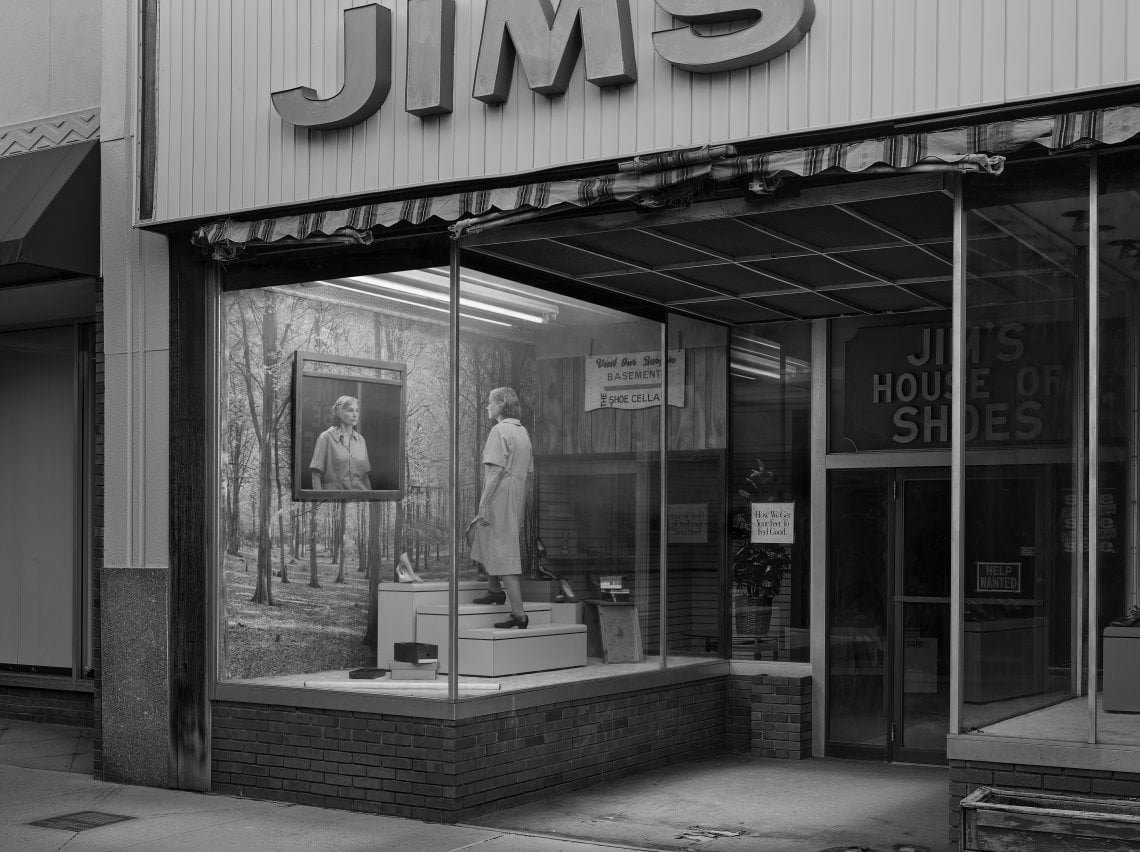198 - Gregory Crewdson
© Gregory Crewdson
Gregory Crewdson’s photographs have entered the American visual lexicon, taking their place alongside the paintings of Edward Hopper and the films of Alfred Hitchcock and David Lynch as indelible evocations of a silent psychological interzone between the everyday and the uncanny. Often working with a large team, Crewdson typically plans each image with meticulous attention to detail, orchestrating light, color, and production design to conjure dreamlike scenes infused with mystery and suspense. While the small-town settings of many of Crewdson’s images are broadly familiar, he is careful to avoid signifiers of identifiable sites and moments, establishing a world outside time.
Born in Brooklyn, New York, Crewdson is a graduate of SUNY Purchase and the Yale University School of Art, where he is now director of graduate studies in photography. He lives and works in New York and Massachusetts. In a career spanning more than three decades, he has produced a succession of widely acclaimed bodies of work, from Natural Wonder (1992–97) to Cathedral of the Pines (2013–14). Beneath the Roses (2003–08), a series of pictures that took nearly ten years to complete—and which employed a crew of more than one hundred people—was the subject of the 2012 feature documentary Gregory Crewdson: Brief Encounters, by Ben Shapiro.
Crewdson’s emblematic series Twilight (1998–2002) ushers the viewer into a nocturnal arena of alienation and desire that is at once forbidding and darkly magnetic. In these lush photographs, the elements intervene unexpectedly and alarmingly into suburban domestic space. Crewdson’s psychological realism is tempered in these images by their heightened theatricality, while themes of memory and imagination, the banal and the fantastic, function in concert with a narrative of pain and redemption that runs through American history and its picturing.
Cathedral of the Pines, which was first exhibited at Gagosian in New York in 2016, depicts unnamed figures situated in the forests around the town of Becket, Massachusetts. In scenes that evoke nineteenth-century American and European history paintings, the works’ subjects appear traumatized by mysterious events or suspended in a fugue state. Working with a small crew to maintain an intimate and immediate atmosphere, the artist also used people close to him as models. But even once we know who “plays” the protagonists, their actions remain cryptic and their relationships unclear. “There are no answers here,” states the artist, “only questions.” The 2018–19 series An Eclipse of Moths is set amid down-at-heel postindustrial locations including an abandoned factory and a disused taxi depot. They serve as backdrops for Crewdson’s enigmatic dramas of decay and potential rebirth.
Gregory’s most recent body of work, Eveningside (2021-2022), was shot in B&W and formed the centrepiece of a retrospective trilogy of work, alongside Cathedral of the Pines and An Eclipse of Moths, in a major exhibition at Galerie D’Italia in Turin from October 2022 until January 2023. A older series called Fireflies (1996) was also included as ‘both connective tissue and counterpoint…’. A book, also entitled Eveningside, was published to accompany the show.
On episode 198, Gregory discusses, among other things:
The three phases of his creative process
Why he chose B&W for Eveningside
His transition from film to digital
The abiding themes in his work
How every artist has one story to tell
Falling in love with photography from day one
His love of movies
The significance of nudity in his work
Allowing for ‘a certain kind of unexpected beauty and mystery’ to come out of the process
Windows
Never being quite satisfied with the results
The relationship between true beauty and sadness
The act of making a picture being an act of seperation from the world
The way in which the subjects of his work always seem disconnected and alone…
And how that references the act of making the picture.
Referenced
“I’ve said many times, I feel like every artist has one story to tell and that central story is told through an artists lifetime, and when you come of age in your early twenties you’re confronted with movies and artwork that you love or you hate and you’re defined in a certain way as a kind of aesthetic being, and then you spend your life sort of working out those things, and trying to find yourself within that frame of influences.”
This episode of the podcast is sponsored by the Charcoal Editions - the newest project of Charcoal Book Club.
A curated, online gallery selling open edition silver gelatin prints.
To download this episode and all other archived episodes sign up as a A Small Voice member HERE!
•
To download this episode and all other archived episodes sign up as a A Small Voice member HERE! •
Tier 1 membership: access to complete archive of past episodes, plus exclusive member-only content including a second fortnightly episode.
•Tier 2 membership: access to complete archive of past episodes.

